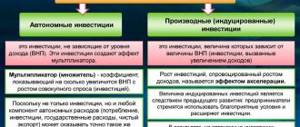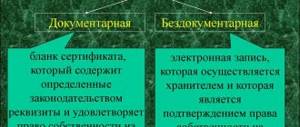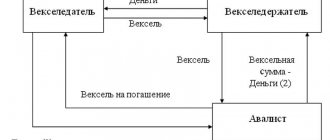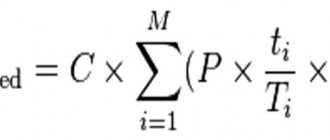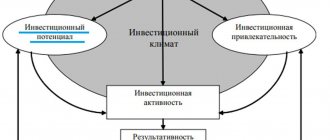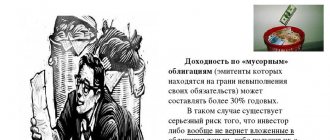Almost any enterprise has property that is included in current assets and is necessary for carrying out current activities. However, if everything is clear with equipment and financial savings, then intangible assets raise more questions. They are not expressed in material form; they usually exist in the plane of legal rights. But, despite the fact that they do not have any physical expression, intangible assets are also the most important component of any company, reflect its liquidity and stability, and allow it to make a profit.
How to draw up an act of commissioning an intangible asset ?
What are intangible investments
This is an investment in intellectual property that does not have a tangible form. It sounds complicated, so I’ll take a closer look.
The concept of intangible property
Intangible property refers to objects that do not have a material form, but are actively used in production activities.
Tangible property includes:
- Intellectual property - patents, scientific research, copyrights for various types of products from computer programs to musical works of culture and art, know-how.
- The assets that form a company’s business reputation are trademarks and brand.
Where does intangible property come from?
Ways to obtain intangible assets:
- purchase for a fee;
- creation within the organization;
- making a contribution to the authorized capital;
- receiving as a gift;
- under a contract involving non-monetary means of execution.
Advantages and disadvantages of intangible investments
Any profitable investment in intangible assets can be used by several people at once. This is directly the author of the intellectual property, as well as investors.
Such sources create favorable conditions for long-term investments and contribute to:
- rapid, sustainable progress of cultural and technical industries;
- financial stimulation of the activities of scientists, research institutions or companies in various fields;
- improving your own business (the price for each unit of product or service, sales volume increases, and, if necessary, payments associated with servicing the loan are reduced);
- reducing or completely replacing state participation in the procedure for issuing patents and licenses (the process of acquiring exclusive rights to intellectual property is simplified);
- attracting investors for the purpose of actively developing the latest technologies, devices and materials;
- introduction of innovative developments in the field of goods and services;
- growth of the economic potential of the state.
In addition to the undeniable advantages, the use of intangible assets has disadvantages:
- economic risks (preliminary verification of the financial reliability of investments will be required before investing capital for a long period of time);
- sometimes they pay off slowly.
Features of investment in intangible assets
Intangible assets are not equipment or finances. Even finished goods obtained through the use of intangible property are also not intangible assets. The peculiarities of capital investments and assets lie in their very essence. I'll explain it with an example.
Let's imagine that I managed to create a unique cafe with a unique menu. I also have a registered trademark, a recognizable tune that is associated with my catering establishment, and a special way of serving.
And I decide to start selling the franchise. Franchising is exactly that investment in intangible assets. I am selling my trademark and goodwill to a third party who will use them for their own purposes.
Basic methods for assessing investments in intangible assets
When planning to invest in intangible assets, it is worth considering the future acquisition through the prism of the main methods for assessing investments in intangible assets.
Traditionally, there are three methods of assessment:
- Comparative. I find the cost at which similar goods were purchased, and in comparison, I calculate the price of the asset that I purchased. This approach has one drawback - most intangible goods are not repeated, and it is difficult to find an exact analogue.
- Expensive. The cost is equal to the company's costs for the invention or acquisition of intangible assets.
- Profitable. The cost consists of an assessment of the economic benefits that the intellectual property product will bring to the company.
Characteristics of depreciation methods
Different types of intangible assets require an individual approach to their assessment and depreciation. The linear method is universal for any property, regardless of its useful life, the amount of profit generated and other indicators. The method is often used in cases where it is impossible to determine the exact operating period, and predicting possible economic benefits in the future is difficult. The method assumes an even distribution of the total depreciation amount across months.
The reducing balance method is used for intangible assets, the profit from which will be greatest in the first years of operation. The amounts are distributed unevenly but remain constant during one period. For the calculation, an acceleration factor is used, which is regulated by accounting policies. The residual or market value indicator is multiplied by a fraction: the numerator is the coefficient, the denominator is the remaining service life, determined in months.
The production method is the most flexible approach depending on the financial result obtained. The amounts are calculated directly proportional to the volume of manufactured/sold products with the participation of intangible assets.
Pros and cons of investments
Among the advantages of investing in intangible assets is an invaluable impact on the development of scientific and technological progress.
Scientists, designers and other inventors receive an incentive to work, since no one has a monopoly on developments, licenses and patents. Investments in the introduction of know-how, production technologies and new equipment into production have a positive effect on economic development.
But there are also disadvantages associated with the risks of investing in intangible property.
Risks
The main disadvantage of investing in intangible assets is a certain amount of economic risk, which is inherent in any type of investment. If you are a developer or investor in a project under development, then you take more risks, since you have no guarantee of future success (and profit).
A significant share of fixed capital can be occupied by intangible assets.
These include patents, licenses, trademarks and trademarks, rights to use natural and other resources, computer software products, new technologies and technical solutions that bring benefits in the process of economic activity. Investments in intangible assets pay off over a certain period due to the additional profit received by the enterprise as a result of their use, and due to depreciation charges. With the development of market relations, the size and share of intangible assets in the total amount of fixed capital of an enterprise increases. [p.271] Intangible assets include patents, licenses, trademarks and trademarks, rights to use natural and other resources, computer software products, new technologies and technical solutions that bring benefits in the process of economic activity. Investments in intangible assets pay off over a certain period due to the additional profit received by the enterprise as a result of their use, and due to depreciation charges. With the development of market relations, the size and share of intangible assets in the total capital of the enterprise increase. Economic interest in increasing the profitability of an enterprise through the use of the enterprise’s exclusive right to the results of intellectual activity is also increasing. Hence, analysis of the efficiency of using intangible assets is important. The technique is most fully described by A.D. Sheremet [59]. [p.347]
Investment in intangible assets is the process of accounting for the costs of creating and acquiring non-current assets as a set of rights that arise in an organization on various legal grounds, which the organization intends to use in order to generate income for a period exceeding 12 months. [p.657]
Capital construction projects that are in temporary operation until they are put into permanent operation are not included in fixed assets, but are reflected as construction in progress. When making capital investments and investments in intangible assets in the Construction in Progress account, the enterprise's expenses for paying interest on bank loans and other borrowed obligations used for these purposes are taken into account. In this case, interest paid after the commissioning of fixed assets and registration of intangible assets is charged to the Use of profit account or to other accounts for accounting for similar sources. [p.209]
FINANCING INVESTMENTS IN INTANGIBLE ASSETS [p.242]
Long-term investments in intangible assets are intended to expand the scientific and technical potential of the enterprise, belong to it by right of ownership and generate income. [p.242]
Knowledge of these provisions will allow enterprise financiers to effectively manage investments in intangible assets and sources of their financing. [p.244]
In this book, we will use the term financial manager to refer to anyone who is responsible for important investment and corporate financing decisions. But only in the smallest firms can one person be responsible for all the decisions discussed in this book. Responsibility for decision making is present at all levels of the firm. Senior management is, of course, always involved in financial decisions. But responsibility for them also lies with the engineer who designs new means of production; design determines the type of real assets that the company will have. An advertising manager also sometimes makes important investment decisions in her job. The marketing manager is also involved in the financial decision-making process when running a large advertising campaign. An advertising campaign represents an investment in intangible assets that will pay off through future sales and profits. [p.7]
Investments in intangible assets [p.161]
Gross fixed capital formation consists of capital repair costs, investments in intangible assets and investments in other fixed assets. These latter investments are called capital investments. [p.349]
Investments in non-financial assets, million rubles, including investments in fixed capital capital repairs of fixed assets investments in intangible assets investments in other non-financial assets 33945.1 26550.7 7244.9 142.9 6.6 100.0 78.2 21.4 0.4 100.0 79.5 20.0 0.5 [p.342]
Compliance costs include preventative and inspection costs. From an economic point of view, which is not yet reflected in existing accounting systems, these costs largely represent investments in the intangible assets of the enterprise. [p.127]
Accounting methods and the provision of financial information currently do not fully reflect modern economic reality in essence, even when accounting and reporting according to international standards - most types of investments in intangible assets are considered under the pressure of tax systems as current costs. In addition, despite the regulation of various regulations designed to facilitate the comparability of these reports, when preparing financial statements within the framework of the accounting policies adopted by the enterprise, it is possible to use a variety of accounting methods, which can make accurate comparisons even between enterprises in the same industry difficult. [p.239]
Accounting methods and the provision of financial information currently do not fully reflect modern economic reality - many types of investments in intangible assets are considered under the pressure of tax systems as current costs. In addition, despite the regulation by various regulations designed to facilitate the comparability of these reports, when preparing financial statements within the framework of the accounting policies adopted by the enterprise, a variety of accounting methods are possible. [p.177]
Financing long-term investments in intangible assets [p.161]
Long-term investments in intangible assets are intended to expand the scientific and technical potential of the enterprise, belong to it by right of ownership and generate income. Intangible assets are different from other assets [p.161]
It is an investment operation aimed at using new scientific and technological knowledge in the operating and other activities of the enterprise in order to achieve commercial success. Innovative investments in intangible assets are carried out in two main forms: a) through the acquisition of finished scientific and technical products and other rights (acquisition of patents for scientific discoveries, inventions, industrial designs and trademarks, acquisition of know-how, acquisition of franchising licenses, etc.) b) through the development of new scientific and technical products (both within the enterprise itself and upon its order by the relevant engineering firms). Implementing innovative investment in intangible assets can significantly increase the technological potential of an enterprise in all areas of its economic activity. [p.354]
FINANCING LONG-TERM INVESTMENTS IN INTANGIBLE ASSETS [p.22]
Capital-forming investments are directed mainly to the maintenance and development of material production and the service sector. They include [21] “capital investments (investments in fixed assets), costs of major repairs, investments in the acquisition of land plots and environmental management facilities, investments in intangible assets (patents, licenses, software products, research and development, investments in replenishment of inventories, etc.).” [p.32]
Investment in intangible assets is a process [p.316]
After this, you need to study the dynamics and implementation of the plan in the main areas of investment activity - construction of new facilities, acquisition of fixed assets, investments in intangible assets, long-term financial investments (Table 23.1). [p.583]
Investments in intangible assets 1D 1.3 1.4 1.8 1.0 1.2 [p.18]
During major repairs of buildings and structures, worn-out structures and parts are replaced with more durable and economical ones that increase the operational capabilities of the object being repaired, in addition to the complete replacement of walls, foundations, interfloor ceilings, etc. Investments in intangible assets include the acquisition of patents, trademarks, software products, know-how, rights to use land plots, environmental management facilities, etc. The procedure for classifying objects as intangible assets and their composition is regulated by the Regulations on accounting of intangible assets dated October 16, 2000. Costs are reflected as part of investments in other non-financial assets for the acquisition of land plots and environmental management facilities. [p.18]
Based on the procedure for reflecting intangible assets in accounting, the main source of financing for their acquisition is depreciation charges received as part of the revenue from the sale of products (works, services). Knowledge of these provisions allows enterprise financiers to effectively manage investments in intangible assets and sources of their financing. [p.178]
Investments in non-financial assets are represented by investments in fixed assets, investments in intangible assets and investments in other non-financial assets. [p.113]
Capital-forming investments include the following indicators: capital investments (investments in fixed assets), capital repair costs, investments in the acquisition of natural resources, investments in intangible assets (patents, licenses, software products, research and development, investments in replenishment of inventories funds). [p.9]
Based on the degree of liquidity and risk, investments in intangible assets can be divided into three groups: highly liquid, medium liquid and difficult to liquid. In general, when assessing the liquidity of an enterprise’s property, intangible assets are usually classified as low-liquidity, since they are much more difficult to sell than fixed assets and current assets. Unjustified growth of intangible assets leads to a decrease in own working capital, a decrease in the current liquidity ratio and a slowdown in the turnover of total capital. [p.350]
We also note that loans are not the only way to protect against taxes. For this purpose, firms also use the accelerated method of calculating depreciation on machinery and equipment. Investments in intangible assets can be written off immediately. The same is true with contributions to the company’s pension fund. The more a firm uses such methods of protecting profits, the lower the expected tax protection that accompanies borrowing10. [p.468]
Which outflows should be capitalized When a company builds a new plant, there is an outflow of funds, but shareholders also acquire assets that can generate large cash inflows in the future. Therefore, accountants are ready to attribute such expenses to long-term investments. But what about expenses for R&D, personnel training or a new advertising campaign? These expenses also represent investments in the future, but accountants refuse to recognize investments in intangible assets. So they deduct such expenses from current profits.” [p.758]
Investments in intangible assets (12) Capital investments (402) Major repairs (67) Changes in inventories Change in t-inventories of finished goods Work in progress [p.350]
Depreciation (amortization). An accounting procedure designed to show the costs, or expenses, resulting from the decline in value of intangible assets over time. The term depreciation is commonly used in relation to intangible assets, while in relation to tangible assets the same procedure is often called depreciation write-off. Depreciation (depreciation and amortization charges) is a non-cash expense, meaning it is not an actual outflow of cash. Just as for writing off capital costs in tangible assets, there are several methods for depreciating investments in intangible assets [p.359]
Investment strategies
Strategies for investing in intangible assets are no different from other investments. Here you are also investing money in something that should bring you benefits in the future, but can make you bankrupt.
A competent assessment of information, market research, and gaining at least minimal knowledge about basic investment strategies will help you decide which strategy is best to use.
Alternatives
An alternative to investing in intangible assets is investing in bonds, shares, and mutual funds. Even an ordinary bank deposit can be considered as an alternative to investing in intangible property.
Another issue is making a profit. A successful investment in the start-up Apple brand at one time brought fabulous profits to those who took risks. Today, it is the brand that is valued at billions of dollars, not the company’s property or production asset.
Material Investments
Material investments are, first of all, investments in the fixed capital of an enterprise or organization; this is what was called capital investments in the Soviet Union.
Investments in production inventories and finished product inventories also refer to material investments, but their role is to ensure the continuity of production and the uniformity of its sales in the context of expanding production.
Composition and structure of material investments
The basis for the development of an enterprise is precisely material investments, since they are directed towards improving the technical and technological base of production of the enterprise, expanding the scale of production, and developing new product markets.
For this purpose, enterprises acquire real estate and movable property, build new workshops, production complexes, purchase new advanced equipment, and acquire mineral deposits and land plots. The structure of material investments corresponds to the capital structure of the enterprise, which is divided into fixed and working capital. Fixed capital grows as a result of material investments and ensures capital growth in the future. Working capital in material investments increases only in the event of a change in fixed capital. Investments are considered only the increase in working capital in comparison with the current consumption of raw materials.
Valuation of material investments
The economic assessment of material investments is carried out according to the classical scheme: indicators of return on investment, the payback period of investments in an investment project, the present net value and the internal rate of return of the project are determined. The main thing for an investor is the internal rate of return indicator. If this indicator is lower than the refinancing rate of the Central Bank, the investor will prefer to invest his funds in more efficient assets or even in financial assets with a higher yield.
Reviews
Expert opinion
Vladimir Silchenko
Private investor, stock market expert and author of the Capitalist blog
Ask a Question
If you wish, you can find many different reviews. Someone started working with a startup related to intellectual property and made a huge profit by moving to the capital. And someone went broke and is now indignant, writing angry posts about how intangible assets are evil, just like their creators. I will say on my own behalf that investing money in intangible property or a company’s business reputation is beneficial when you are confident in its prospects and real future. A competent assessment of the future of the investment object will help to understand whether the investment will be profitable.
Rules for accounting for intangible assets
The unit of measurement of intangible assets is an inventory object. This term refers to the totality of all rights associated with the purchase of one asset. An object may include rights to a collection of objects.
Objects are recorded in account 04 “Intangible assets”. The accounting must indicate their original cost. The situation is somewhat more complicated with depreciation. In relation to some assets, it cannot be reflected on account 05 “Depreciation of assets”. Accruals are indicated in the credit column of account 4 “Intangible assets”. The receipt of objects into the enterprise is reflected in the debit of account 04. The correspondence will be account 08 “Investments in non-current assets”.


